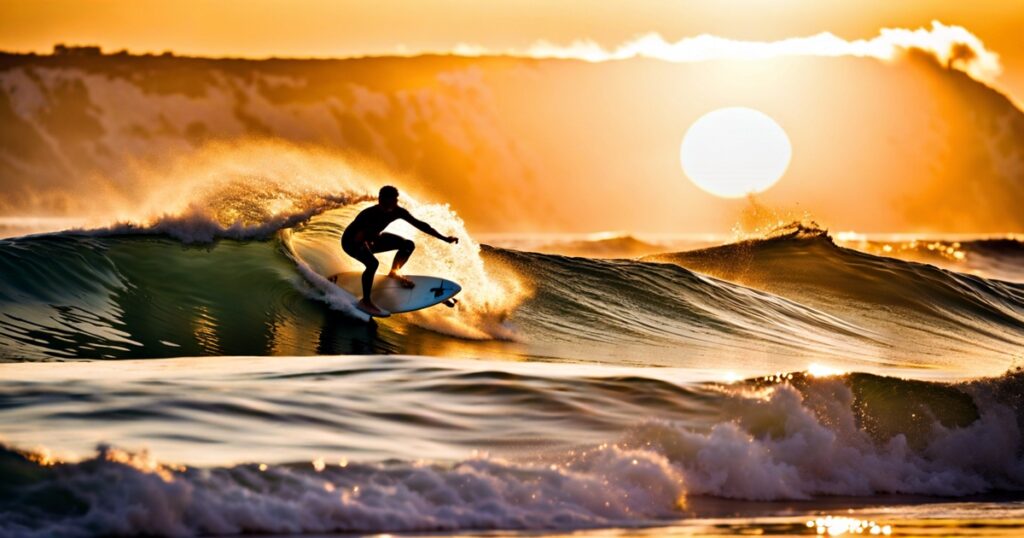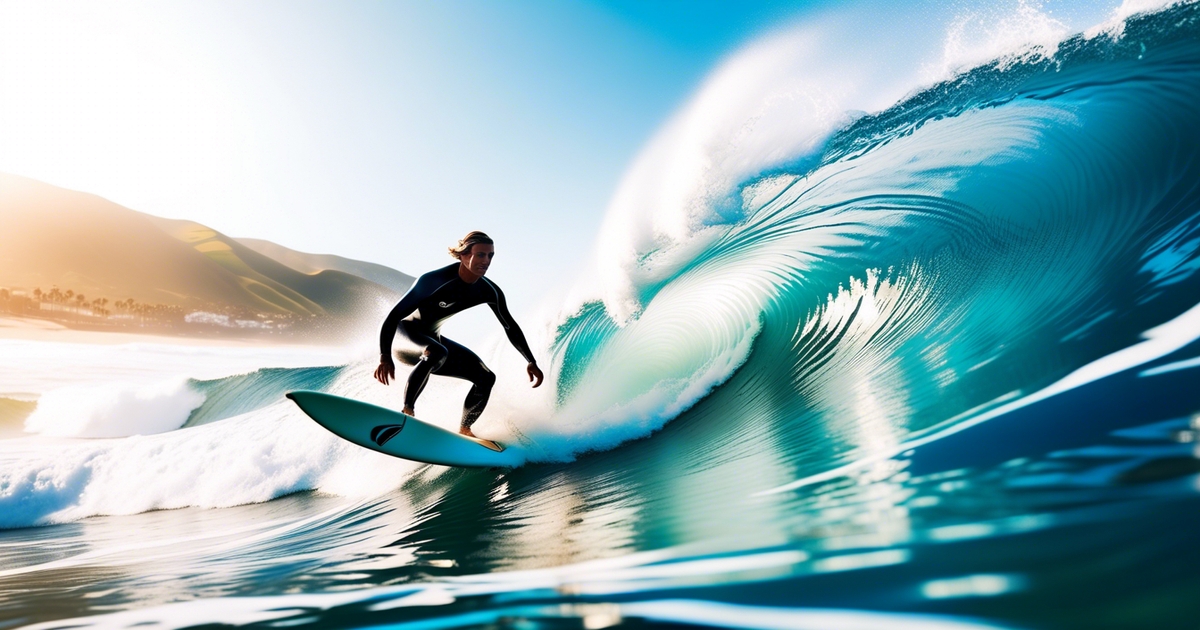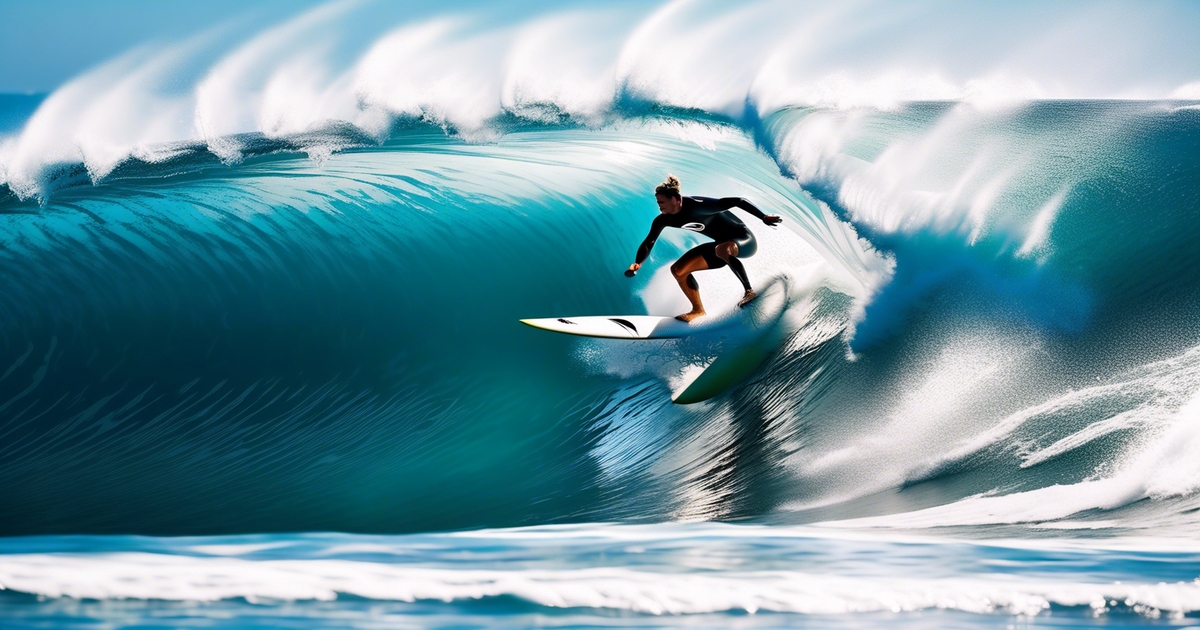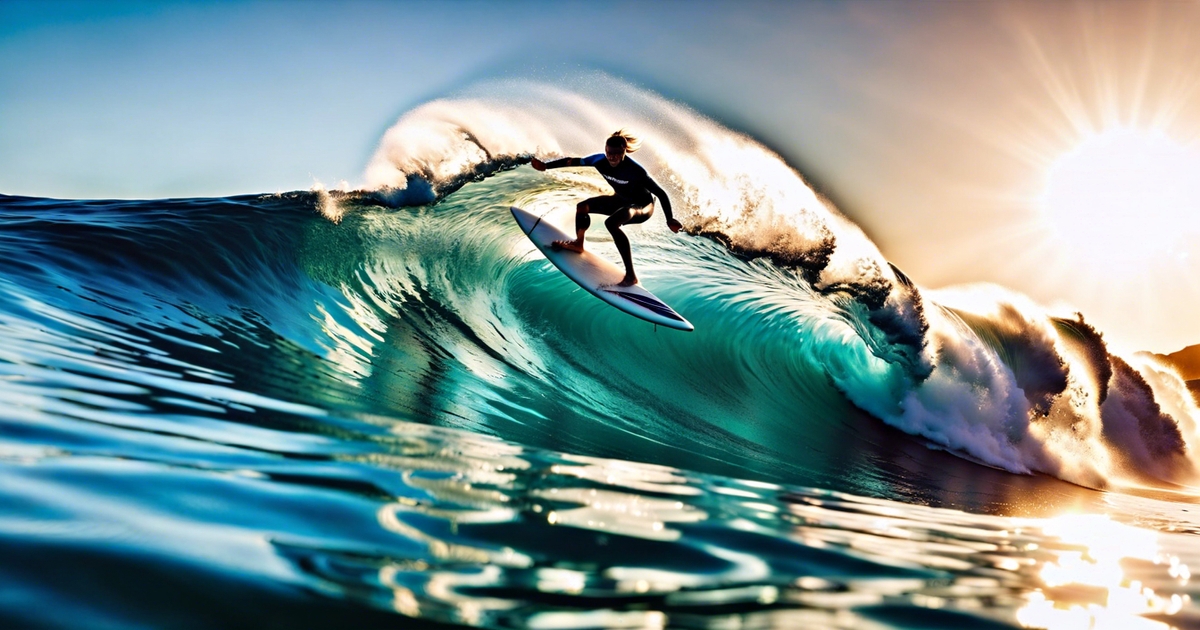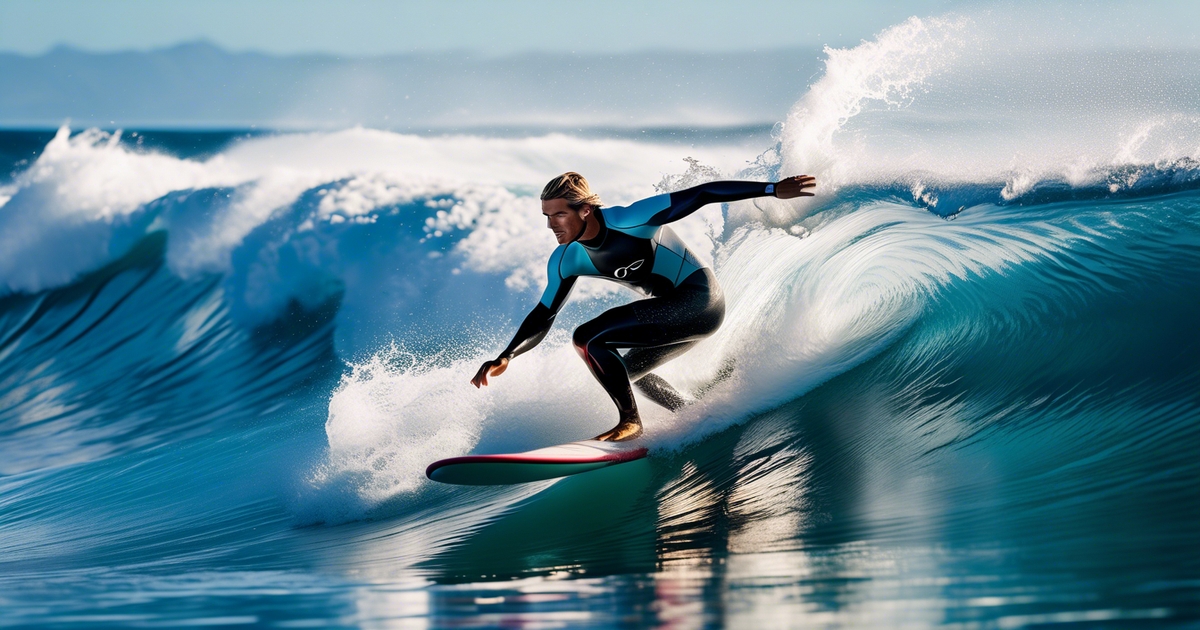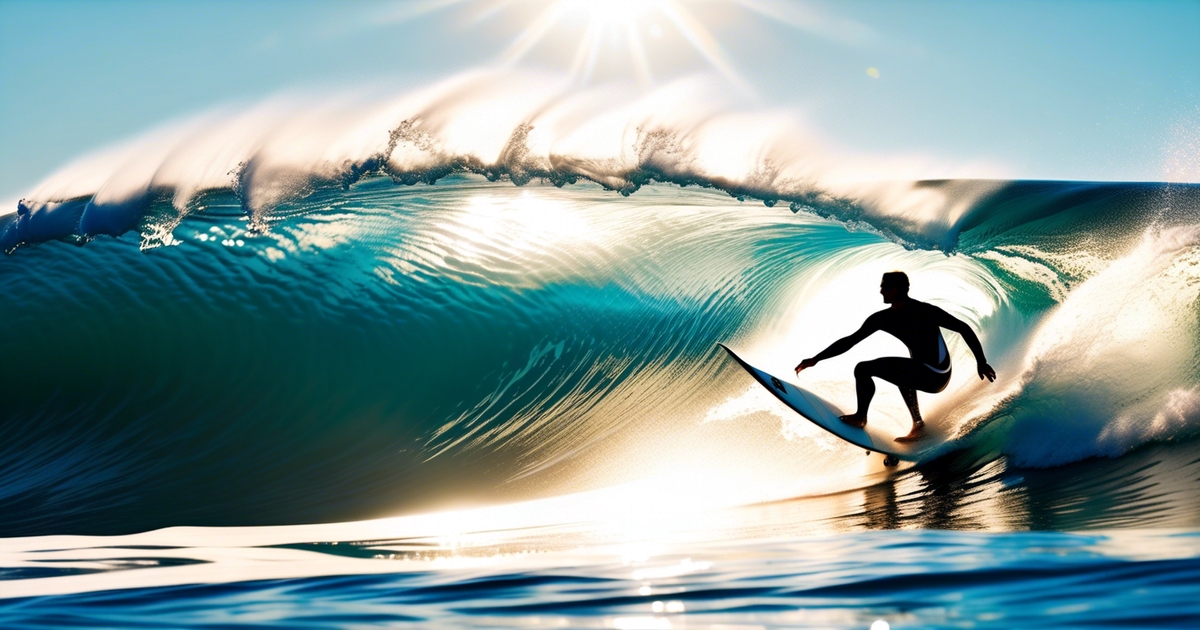What is Surfing, a sport originating in ancient Polynesia, has evolved into a global phenomenon. It involves riding ocean waves on a board, blending athleticism with a deep connection to nature, characterized surfing. From its humble roots to becoming an Olympic sport, surfing now captivates millions worldwide. This water sport demands skill, balance, and a love for the sea, attracting enthusiasts of all ages seeking adventure and tranquility in the waves. Whether you’re a seasoned pro or a curious beginner, exploring the essence of surfing unveils a world where surfboards become magic carpets and waves transform into playgrounds of endless possibilities.
Key Takeaways: What is Surfing?
- Surfing is a sport that involves riding waves on a surfboard, requiring balance, skill, and wave knowledge.
- To catch waves successfully, surfers need to paddle out to the lineup, position themselves correctly, and time their pop-up onto the board.
- The origins of surfing date back to ancient Polynesians and have evolved into a global phenomenon with various styles and disciplines.
- Surf culture encompasses a laid-back attitude, respect for the ocean, and a strong sense of community among surfers worldwide.
- Surfing has transitioned from a pastime to a competitive sport with professional athletes, competitions, and sponsorships.
- Embracing a surfing lifestyle involves immersing oneself in ocean activities, environmental awareness, and a deep connection with nature.
Surfing Explained
Equipment
Surfing requires minimal equipment, including a surfboard, leash, and wax. The surfboard is crucial for riding waves, while the leash keeps the board attached to the surfer. Wax provides traction for the feet on the board, preventing slipping.
Longboards are typically longer than 8 feet and offer stability, making them ideal for beginners. On the other hand, shortboards are under 7 feet in length and provide maneuverability, allowing advanced surfers to perform tricks and sharp turns.
Wave Conditions
Wave conditions play a significant role in surfing success. Surfers look for waves with a good shape, size, and speed. Clean waves without too much chop or whitewater are preferred for smoother rides. The direction of the wave break also affects surfing, with right-breaking waves being more suitable for regular-footed surfers and left-breaking waves for goofy-footed surfers.
Safety and Etiquette
Prior to hitting the waves, surfers should acquaint themselves with basic safety rules and surfing etiquette. Safety measures include wearing a leash to prevent losing the board and avoiding crowded areas to minimize collisions. Understanding surfing etiquette is crucial to maintaining harmony in the lineup. Following the “first in, first out” rule ensures fairness among surfers waiting for their turn to catch a wave.
Catching Waves
Paddling Out
Surfers begin by paddling out past the breaking waves to reach the lineup where waves start to form. They use their arms to propel themselves forward on the surfboard, navigating through the incoming waves efficiently. By timing their paddling correctly, surfers can avoid being caught by the breaking waves and reach the optimal position to catch a wave.
Paddling out requires physical endurance and an understanding of the ocean’s dynamics. Surfers need to paddle with enough speed to overcome the force of incoming waves while maintaining balance on the board. It’s crucial to conserve energy during this process to ensure readiness for catching waves later on.
Dropping In
“Dropping in” refers to the moment when a surfer transitions from the crest of a breaking wave onto its face to begin riding it. This maneuver involves angling the surfboard down the face of the wave while maintaining control and balance. Surfers must execute this move swiftly and confidently to maximize their ride’s length and intensity.
The drop-in is a critical aspect of surfing that requires precise timing and skill. Surfers need to anticipate the wave’s movements and position themselves strategically to catch it at the right moment. A successful drop-in sets the foundation for an exhilarating ride down the wave’s face, showcasing the surfer’s agility and expertise.
Timing and Positioning
Timing and positioning are crucial factors in successfully catching waves while surfing. Surfers must observe the ocean conditions carefully, identifying potential waves that offer optimal riding opportunities. By understanding wave patterns and swell direction, surfers can anticipate when a wave will break and position themselves accordingly.
Achieving perfect timing when catching waves allows surfers to harness the wave’s energy effectively, propelling them along its face with speed and grace. Proper positioning on the wave ensures stability and control throughout the ride, enabling surfers to perform maneuvers and tricks with precision. Mastering the art of timing and positioning enhances a surfer’s overall performance and enjoyment in the water.
Surfing Origins
Polynesian Influence
Surfing has deep roots in ancient Polynesian culture, where it was not just a sport but a way of life. Many surf historians credit the Polynesians with inventing surfing, using traditional wooden boards to ride waves for both pleasure and transportation. The art of wave riding was ingrained in their daily activities, shaping the foundation of modern surfing.
Duke Kahanamoku
Duke Kahanamoku, known as the “Father of Modern Surfing,” played a pivotal role in popularizing surfing beyond the shores of Hawaii. As an Olympic swimmer and ambassador of Hawaiian culture, he introduced surfing to the world through his demonstrations and competitions. His efforts in the early 20th century helped elevate surfing’s status from a local pastime to a global phenomenon.
Evolution of Surfing
Surfing’s evolution from bodysurfing to board riding marked a significant shift in the sport’s dynamics. Initially, ancient Hawaiians practiced bodysurfing, using their bodies to ride waves effortlessly. However, with the introduction of early surfboards made from solid wood, surfers transitioned to standing on boards, revolutionizing the sport. This shift paved the way for modern surfing techniques and styles seen today.
Surfing Evolution
Ancient Origins
Surfing traces back to ancient Polynesian cultures, where wooden planks were used for wave riding. These early surfboards were heavy and difficult to maneuver compared to modern designs.
The evolution of surfboards continued over the centuries, with materials shifting from wood to lighter options like fiberglass and foam. This transition revolutionized the sport, making surfing more accessible and dynamic.
Impact on Boardsports
Surfing’s influence extends beyond the waves, sparking the creation of various boardsports like skateboarding and snowboarding. These sports adopted similar techniques and maneuvers from surfing, contributing to their development and popularity.
The connection between surfing and other boardsports is evident in the shared culture, terminology, and even competitions. Surfers often engage in skateboarding or snowboarding during off-seasons, showcasing the interconnected nature of these activities.
Global Reach and Economic Value
Surfing has transcended borders, becoming a global phenomenon with a significant economic impact. Coastal regions around the world rely on surfing tourism as a major source of income, driving local economies and businesses.
The economic value of surfing encompasses surfboard manufacturing, surf schools, competitions, and related merchandise. Surfing events attract thousands of spectators and participants, generating revenue for host cities and promoting tourism.
Surf Culture
Connection
Surfers share a deep connection with the ocean, viewing it as a place of solace and adventure. The rhythmic waves become their playground, offering both challenge and tranquility as they surf.
Surfing enthusiasts often express a profound love for the sea, describing it as a source of freedom and joy. The act of riding waves creates a unique bond between surfers and nature.
Lifestyle
The laid-back lifestyle associated with surfing is characterized by a relaxed attitude and appreciation for simplicity. Surfers embrace a carefree approach to life, prioritizing experiences over material possessions.
Surf culture promotes values such as camaraderie, respect for the environment, and a love for exploration. It embodies a spirit of adventure and spontaneity that resonates with individuals seeking a break from the ordinary.
Environmental Awareness
Within the surfing community, there is a growing emphasis on environmental awareness and conservation efforts. Surfers understand the importance of protecting the oceans and beaches they cherish.
Many surfers actively participate in beach clean-up initiatives, plastic reduction campaigns, and advocacy for marine conservation. They strive to preserve the natural beauty of coastal areas for future generations to enjoy.
From Pastime to Sport
Transition
Surfing has evolved from a mere pastime to a highly competitive sport embraced by enthusiasts worldwide. Initially viewed as a leisurely activity, surfing gradually transformed into a thrilling sport that demands skill, agility, and determination. The shift in perception from a recreational pursuit to a professional endeavor marked a significant milestone in the history of surfing.
Organizational Influence
The emergence of organizations such as the World Surf League (WSL) played a pivotal role in elevating surfing to the status of a mainstream competitive sport. By organizing prestigious competitions like the Championship Tour, the WSL provided surfers with a platform to showcase their talents on a global scale. These events not only attracted top athletes but also garnered immense popularity among spectators, thereby solidifying surfing’s position as a legitimate professional sport.
Training and Dedication
To excel in competitive surfing, athletes must demonstrate unwavering dedication and commitment to their craft. Training sessions encompass various aspects such as honing technical skills, improving physical fitness, and mastering wave selection strategies. Surfers devote countless hours to perfecting their maneuvers and enhancing their performance in challenging conditions. The relentless pursuit of excellence and the willingness to push boundaries are fundamental traits that distinguish elite surfers in the fiercely competitive realm of professional surfing.
Surfing Lifestyle
Fashion Trends
Surfing lifestyle is not just about riding waves; it encompasses a unique style and fashion trends. Surfers are known for their laid-back attire, including board shorts, graphic tees, and flip-flops. The fashion associated with surf culture often reflects a casual and beach-inspired look, influencing mainstream fashion trends globally.
Surfers have popularized brands like Quiksilver and Billabong, which cater to the surfing community’s style preferences. These brands offer a range of clothing and accessories that embody the carefree spirit of surfing. Surf-inspired fashion has made its way into high-end designer collections, showcasing the enduring influence of surfing on the fashion industry.
Influence on Music, Art, and Film
The influence of surfing extends beyond the waves and into various art forms, including music, art, and film. Surf music emerged in the 1960s, characterized by upbeat rhythms and catchy melodies that capture the essence of the surfing lifestyle. Bands like The Beach Boys popularized this genre, creating a soundtrack for surfers worldwide.
In the realm of art, surfing has inspired numerous artists to capture the beauty and thrill of riding waves through paintings, sculptures, and photography. Artists often depict the dynamic relationship between surfers and the ocean, showcasing the harmony and adrenaline rush inherent in the sport.
When it comes to film, surfing has been a recurring theme in movies spanning different genres. From documentaries highlighting professional surfers’ journeys to fictional narratives set against the backdrop of picturesque beaches, surfing has captivated audiences and brought the sport’s exhilaration to the big screen.
Surf Travel Impact
Surf travel plays a significant role in shaping surfers’ lifestyles, offering them opportunities to explore new waves and cultures around the world. Surfers often embark on trips to exotic destinations known for their ideal surfing conditions, seeking adventure and excitement in uncharted waters.
Traveling to renowned surf spots like Pipeline in Hawaii or Jeffreys Bay in South Africa allows surfers to test their skills in challenging conditions and connect with fellow enthusiasts from diverse backgrounds. These experiences not only enhance their surfing abilities but also broaden their perspectives and foster a sense of camaraderie within the global surfing community.
Surf travel has become a rite of passage for many surfers, enabling them to immerse themselves in different coastal landscapes and embrace the freedom that comes with chasing the perfect wave.
Connection with Ocean
Spiritual Bond
Surfers often describe a profound spiritual bond with the ocean, feeling a deep connection to its vastness and power. This relationship goes beyond mere physical activity.
Surfing provides a unique opportunity for individuals to immerse themselves in the rhythm of the sea, finding solace and tranquility in its ever-changing nature. The act of riding waves becomes a form of meditation, allowing surfers to be fully present in the moment.
Therapeutic Benefits
The act of surfing has been linked to numerous mental health benefits, offering a sense of freedom and release from everyday stresses. Riding waves can be cathartic, providing an outlet for emotions and promoting overall well-being.
Surfing is often used as a form of therapy for individuals struggling with anxiety, depression, or PTSD. The combination of physical activity, exposure to nature, and the sense of accomplishment from catching waves can have a profound impact on one’s mental state.
Conservation Efforts
Surfers are at the forefront of ocean conservation efforts, recognizing the importance of protecting the very environment that brings them joy. Many surfing communities actively participate in beach clean-ups, plastic reduction initiatives, and campaigns to raise awareness about marine pollution.
The sustainability of our oceans is crucial for the future of surfing and the well-being of coastal ecosystems. Surfers understand the delicate balance that exists within marine environments and advocate for policies that promote conservation and responsible stewardship.
Summary
You’ve discovered the ins and outs of surfing, from its roots to the vibrant culture surrounding it. Understanding how surfers catch waves and the evolution of this sport has given you a deeper insight into the connection between surfers and the ocean. Embracing the surfing lifestyle means immersing yourself in a world where nature and adrenaline blend seamlessly.
Now that you’ve delved into the essence of surfing, why not grab a board and hit the waves yourself? Whether you’re a seasoned pro or a curious beginner, there’s a wave out there waiting for you to ride it. So, go ahead, feel the rush, and become part of the ever-thriving surf community. Keep chasing those waves!
Frequently Asked Questions
What is the significance of surfing in modern culture?
Surfing holds a prominent place in modern culture as it symbolizes freedom, connection with nature, and a laid-back lifestyle. It has influenced fashion, music, art, and even language, embodying a sense of adventure and relaxation for enthusiasts worldwide.
How has surfing evolved over time?
Surfing has evolved from its ancient origins as a Polynesian pastime to a globally recognized sport and lifestyle. Advancements in equipment, techniques, and competitions have transformed surfing into a dynamic activity that combines athleticism with a deep appreciation for the ocean.
What are the health benefits of surfing?
Surfing offers numerous health benefits, including improved cardiovascular fitness, enhanced core strength, increased flexibility, and stress relief. The combination of physical activity, exposure to sunlight, and connection with nature can contribute to overall well-being and mental clarity for practitioners of all levels.
How does surfing foster a connection with the ocean?
Surfing fosters a profound connection with the ocean by immersing individuals in its vastness and power. Surfers develop an intimate understanding of tides, currents, and waves, cultivating respect for marine ecosystems while experiencing moments of pure joy and tranquility amidst the natural elements.
Why has surfing transitioned from a pastime to a competitive sport?
Surfing’s transition from a pastime to a competitive sport can be attributed to increased interest, sponsorships, media coverage, and organizational structures like the World Surf League. Competitive surfing provides athletes with opportunities for recognition, career advancement, and the chance to showcase their skills on a global stage.

